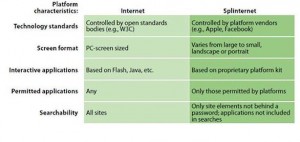- Have any questions?
- Office: +1 (650) 345-8510
- Mobile: +1 (650) 576-6916
- norm@traveltechnology.com
The Splinternet and Travel Distribution
IPhone Hits the Enterprise
January 26, 2010Yes UA Breaks Guitars Does Impact Loyalty
March 8, 2010The Splinternet and Travel Distribution
How the rise of the Splinternet will change travel distribution
 Forrester analyst Josh Bernoff recently posted a blog regarding the end of the golden age of the Web and the rise of the Splinternet. As it name implies, the new environment consists of multiple devices with content and audiences fragmented across these platforms.
Forrester analyst Josh Bernoff recently posted a blog regarding the end of the golden age of the Web and the rise of the Splinternet. As it name implies, the new environment consists of multiple devices with content and audiences fragmented across these platforms.
What does this mean for the future of travel distribution? This represents both a challenge and opportunity for travel marketers. The splintering of platforms and content means that a travel supplier or intermediary can no longer expect their single Web presence to be enough to communicate with their customers. The opportunity comes in the ability to personalize the experience based on the customer segment and platform capabilities. We’ve seen this already where unique iPhone apps have functionality such as augmented reality that only applies to a smartphone device. The whole downloadable app phenomenon provides the delivery mechanism to enhance this personal relationship with the customer.
New platforms such as the iPad and other tablets coming to the market will continue to cause the need for multiple development paths but providing unique experiences that are only possible based on the nature of the device is also a new opportunity. In a talk this week at Stanford University, Chris Anderson, Editor and Chief of Wired Magazine predicted that the tablet would eventually replace the lap top as the primary mobile computing device. As part of the Conde Nast publishing group, Chris was very bullish on how the tablet provides the immersive experience of a magazine while the flexibility and endless content of the Web. The true power of these devices will come in new applications that have yet to be developed.
The traditional travel industry players has always been slow to embrace new technology allowing new entries to capitalize on it and build solid businesses. One just needs to look at the dominance of the four major OTAs to see how this has happened on the Web. Why didn’t American Express become one of these major OTAs? A similar phenomenon is happening in the mobile world with new entries such as TripIt gaining momentum (and investment) offering itinerary management and mobile travel services. With the advent of the Splinternet, the travel industry must embrace this new multi-platform and multi-content world and drive innovation or be a victim of losing control of the the customer to new market entries that understand this opportunity.

